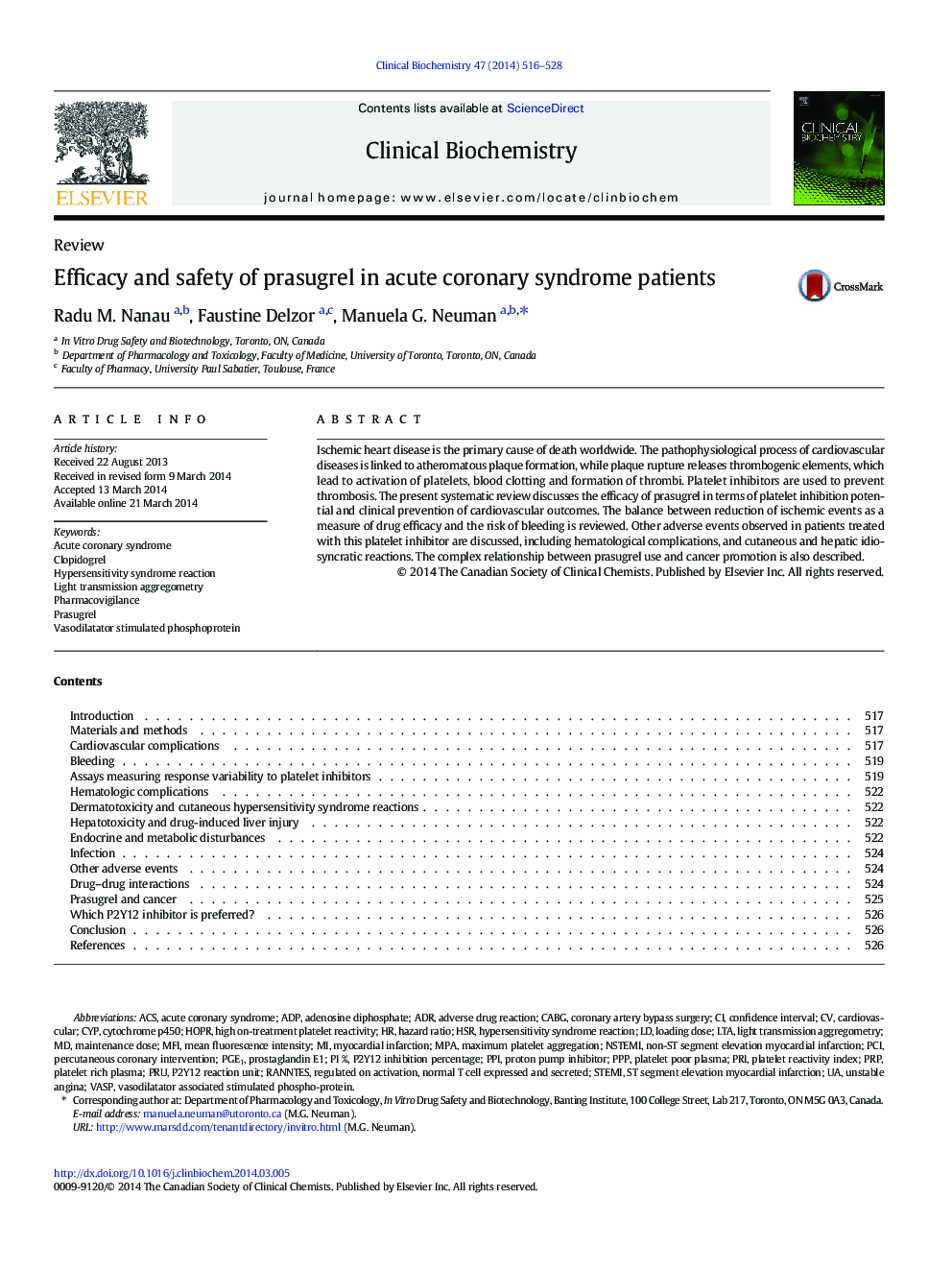| Article ID | Journal | Published Year | Pages | File Type |
|---|---|---|---|---|
| 8317422 | Clinical Biochemistry | 2014 | 13 Pages |
Abstract
Ischemic heart disease is the primary cause of death worldwide. The pathophysiological process of cardiovascular diseases is linked to atheromatous plaque formation, while plaque rupture releases thrombogenic elements, which lead to activation of platelets, blood clotting and formation of thrombi. Platelet inhibitors are used to prevent thrombosis. The present systematic review discusses the efficacy of prasugrel in terms of platelet inhibition potential and clinical prevention of cardiovascular outcomes. The balance between reduction of ischemic events as a measure of drug efficacy and the risk of bleeding is reviewed. Other adverse events observed in patients treated with this platelet inhibitor are discussed, including hematological complications, and cutaneous and hepatic idiosyncratic reactions. The complex relationship between prasugrel use and cancer promotion is also described.
Keywords
PrPPGE1NSTEMIADRSTEMIVASPPharmacovigilancePCILTAADPPRIMPAHSRPPIPRUMFICyPPPPACSadenosine diphosphateMyocardial infarctionunstable anginaLight transmission aggregometryST segment elevation myocardial infarctionnon-ST segment elevation myocardial infarctionregulated on activation, normal T cell expressed and secretedCoronary artery bypass surgeryCABGLoading doseAcute coronary syndromeCytochrome P450platelet reactivity indexAdverse drug reactionconfidence intervalcardiovascularpercutaneous coronary interventionProton pump inhibitormean fluorescence intensityhazard ratioMaintenance dosehigh on-treatment platelet reactivityPrasugrelProstaglandin E1Platelet rich plasmaplatelet poor plasmaclopidogrel
Related Topics
Life Sciences
Biochemistry, Genetics and Molecular Biology
Biochemistry
Authors
Radu M. Nanau, Faustine Delzor, Manuela G. Neuman,
